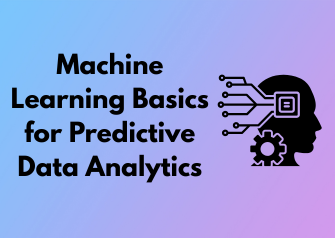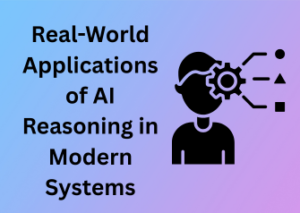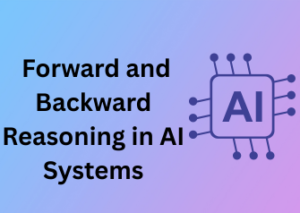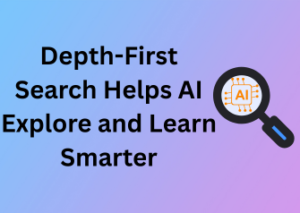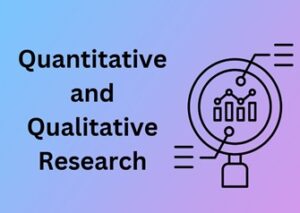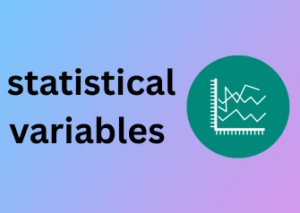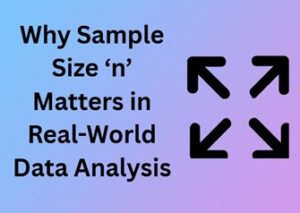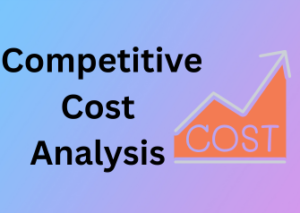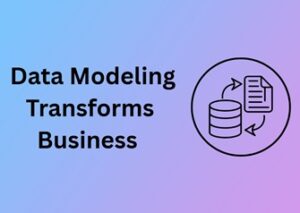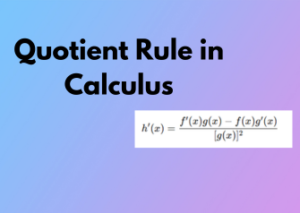Have you ever wondered why predictive data analytics is such a big deal these days? It’s not just about crunching numbers or playing around with datasets. At its heart, predictive data analytics is like giving your data a crystal ball—an ability to look ahead and help businesses, researchers, and decision-makers foresee what’s to come. Pretty cool, right? Let’s dig into the core of what makes it work.
Prediction isn’t magic. Instead, it’s powered by math, statistics, and, increasingly, machine learning. It’s essential to grasp that the predictions aren’t guaranteed; they’re probabilities based on patterns detected in historical data. Think of it as forecasting the weather. Analysts feed in all sorts of historical records (past storms, temperatures, wind speeds), use algorithms to identify trends, and then estimate the likelihood of rain tomorrow. Predictive analytics works in a pretty similar way, but with fields ranging from finance to healthcare.
The Secret Ingredients Behind the Magic
Essentially, predictive analytics has three critical elements that make it tick: data, algorithms, and domain knowledge. Let’s break them down:
- Data: Without data, predictive analytics is like a car with no fuel—it simply won’t go anywhere. Data needs to be accurate, complete, and relevant. If your input data is filled with errors, the predictions could lead you astray.
- Algorithms: This is where the intelligence lies. Algorithms are the step-by-step instructions or “recipes” that help uncover patterns and relationships in the data. These vary in complexity, from simple linear regression to more advanced methods like decision trees or neural networks.
- Domain Knowledge: Algorithms don’t work in isolation. Input from someone who truly understands the industry or domain is key. This expert insight helps refine the models and ensures that they’re solving the right problems.
Garbage In, Garbage Out (GIGO): The Data Quality Rule
Perhaps the most critical aspect of predictive analytics is ensuring that the data going in is high quality. There’s a popular saying in analytics: “Garbage in, garbage out.” This means if your data is messy, incomplete, or biased, your predictions will likely be poor. A big part of making predictive analytics tick is all about cleaning and preparing great datasets for analysis (but more on that in another article!).
Why Should You Care?
Predictive analytics brings countless advantages. It allows businesses to identify trends, uncover risks, and seize opportunities before they become apparent. For example, think about Netflix recommending your next favorite TV show or banks detecting fraudulent transactions in real-time. These aren’t just conveniences; they’re tools that shape the way we live, work, and play.

How Machine Learning Changed Analytics Forever
Machine learning has revolutionized the way we look at data analytics, transforming it from a reactive process into one driven by foresight and efficiency. If you’ve ever marveled at how Netflix seems to know exactly what you want to watch next or how Amazon recommends just the right products, you’ve already seen this transformation in action! Simply put, machine learning (ML) became the game-changer that took predictive analytics to a whole new level. Let’s explore why.
The Evolution: From Crunching Numbers to Intelligent Insights
Before machine learning entered the scene, data analytics primarily relied on static algorithms and statistical models. Analysts would comb through historical data, run pre-set calculations, and draw conclusions about trends. While effective enough for hindsight, it lacked the predictive punch industries craved. Enter machine learning, and suddenly, analytics became an intelligent, self-improving process.
In a nutshell, machine learning creates systems that learn from data rather than rigid programming. These systems analyze historical patterns and predict outcomes with unparalleled accuracy. The real kicker? With time—and more data—they get even better. Imagine having an assistant that improves every day without needing extra training. That’s the magic of ML in analytics!
Why Machine Learning Made the Critical Difference
So, what’s the big deal about weaving ML into predictive analytics? Here are a few reasons why ML has had such a profound impact:
- Adaptive Learning: Unlike traditional analytics, which requires manual tweaking and updates, ML algorithms learn and adapt without direct human intervention. They fine-tune themselves as they process more data!
- Better Predictions: By analyzing vast quantities of data, ML identifies patterns, nuances, and outliers that human analysts might miss. Ever wonder how weather apps can now make eerily accurate short-term predictions? Thank machine learning.
- Automation of Complex Processes: ML has taken over tasks that once consumed weeks of work—cleaning data, designing models, and running simulations—allowing businesses to focus more on decisions rather than processes.
- Scalability: Whether tackling a dataset of thousands of rows or billions, machine learning platforms scale effortlessly, delivering insights without breaking a sweat (or your servers).
Personalization Becomes a Reality
One of the most exciting outcomes of integrating machine learning into predictive analytics is the rise of tailored solutions. ML thrives on data diversity, which means it’s perfectly equipped to cater to individual preferences. For example:
- In healthcare, machine learning powers predictive diagnostics, recommending personalized treatments based on genetic and lifestyle data.
- In retail, brands now understand each shopper’s habits, sending individualized promotions that actually resonate with the customer.
- In entertainment, algorithms suggest curated playlists, movies, or games based on personal tastes.
This shift toward personalization has ushered in an era where businesses don’t just serve “customers,” but individuals.
Supervised vs. Unsupervised Learning: Breaking Down the Basics
Let’s dive right into the world of machine learning, where two core methodologies—supervised learning and unsupervised learning—rule the game. These two approaches help machines make predictions and uncover patterns. If you’re new to this, don’t worry, we’ll keep it simple and engaging!
What is Supervised Learning?
Imagine a teacher guiding a student step-by-step on solving math problems, complete with examples for practice. That’s supervised learning in a nutshell! In this machine learning approach, the “teacher” is a dataset that comes with labeled output. It means we already know the correct answers (or outcomes) for the data provided.
Here’s a quick example: Suppose you’re building a model that predicts house prices. Your dataset includes input features like the size of a house, the number of bedrooms, and the location. Plus, it has the actual selling prices as labels for those houses. The supervised learning algorithm learns from this labeled data so it can predict prices for new houses later.
Popular Examples and Algorithms:
- Regression: Perfect for continuous outputs like predicting temperatures or house prices.
- Classification: Used for categorical outputs, like determining if an email is spam or not.
Bottom line? Supervised learning is great when you already have examples of what you want to predict.
And What About Unsupervised Learning?
Now, flip the story. Imagine giving a student a stack of notes and asking them to identify patterns on their own—no guidance, no answer key. That’s unsupervised learning! Here, the data doesn’t come with labels or predefined outcomes. The model’s job is to organize and make sense of the data on its own.
Can’t picture it? Here’s an example: A company might use unsupervised learning to segment customers. By feeding in customer data (like purchase history and spending habits), the algorithm could group customers with similar characteristics. These groupings, or “clusters,” could then be used to create targeted marketing strategies.
Top Use-Cases in the Real World:
- Clustering: Grouping similar items, like customers, genes, or even social media trends.
- Dimensionality Reduction: Simplifying large datasets to make them easier to analyze without losing much information.
Unsupervised learning excels at uncovering hidden patterns in data and is particularly useful when you’re exploring unknown territory.
How Do They Compare?
If supervised learning is about precision and predictability, unsupervised learning is all about exploration and discovery. Let’s recap with a quick comparison:
- Supervised Learning: You have labeled data and a clear goal (e.g., predict house prices).
- Unsupervised Learning: No labels here—just a quest to find patterns or groupings (e.g., identify groups of customers).
Pro Tip:
Choosing between supervised and unsupervised learning depends on your data and your objective. If you’ve got labeled data and a well-defined question, supervised learning is the way to go. But if you’re looking for insights in a sea of unstructured data, unsupervised learning will be your ally.

Algorithms That Shape the Future: From Regression to Neural Networks
Let’s dive into one of the most exciting aspects of machine learning: the algorithms. These are the magical tools that turn raw data into actionable insights, driving everything from movie recommendations to groundbreaking medical discoveries. But what exactly are they, and why are they so important? Buckle up, because you’re about to go on a journey through some of the most essential algorithms shaping predictive data analytics today!
Linear Regression: The Friendly First Step
For many, linear regression is their introduction to machine learning. Think of it as the “hello, world” of algorithms. It’s simple, yet incredibly useful for understanding relationships between variables. Let’s say you own an online store, and you want to predict your sales based on ad spending. Linear regression helps you find a straight line between these two variables—pointing you in the right direction for future decisions. It’s not flashy, but hey, classics never go out of style!
Decision Trees: The Yes/No Masters
If you’ve ever made a pros-and-cons list or followed a flowchart, you already understand the concept behind decision trees. This algorithm works by asking a series of yes/no questions to split your data into smaller, manageable chunks. For instance, if you’re trying to predict whether someone will buy a product, the tree might consider age, budget, or browsing history. It’s wonderfully intuitive—and gets even better with its cousin, the random forest algorithm, which combines multiple decision trees to boost accuracy.
Clustering and K-Means: Finding Patterns Without Guidance
Imagine being handed a bucket of multicolored marbles and asked to sort them by color. That’s essentially what clustering algorithms like K-Means do. Often used in unsupervised learning, these algorithms group your data into meaningful clusters without any specific labels. Retailers use this to segment customers, identifying groups like bargain hunters or premium shoppers. With clustering, patterns emerge from what previously seemed like chaos.
Neural Networks: The Powerhouses of Prediction
Dubbed the “rockstars” of machine learning, neural networks mimic the human brain’s structure to solve insanely complex problems. Got a pile of messy, unstructured data like images or text? Neural networks are your go-to. Think voice assistants understanding your commands or facial recognition systems. Fun fact: neural networks are the foundation for trendy subfields like deep learning, which powers everything from natural language processing to self-driving cars. They might be challenging to grasp initially, but their potential is mind-blowing.
Support Vector Machines (SVM): Drawing the Perfect Boundary
Have you ever tried to separate two kinds of items, like apples and oranges, so there’s no confusion? In the algorithm world, Support Vector Machines (SVM) shine at this. They draw a boundary (called a hyperplane, for the tech-savvy) that divides data points into categories while ensuring maximum distance between groups. SVM thrives in applications like spam email detection because it’s stellar at distinguishing between two opposing classes.
Ensemble Methods: Teamwork Makes the Dream Work
Why settle for one algorithm when you can combine several and get better results? That’s the philosophy behind ensemble methods, like bagging and boosting. One popular example is the Gradient Boosting Machine (GBM), which iteratively improves predictions by correcting errors from the previous round. It’s like having a team of experts solving a puzzle together—each one leveraging their unique strengths to drive toward the best result.
Data Preparation: The Unsung Hero Behind Predictions
Welcome to the world of data preparation – the behind-the-scenes superstar of any successful predictive analytics project. If machine learning models were rock bands, data preparation would be the trusty roadie ensuring everything is perfectly set up for the main event. While often overlooked in favor of flashier algorithms and AI breakthroughs, this process is what allows predictions to actually shine. Let’s dive into why it’s so essential and how it lays the foundation for any reliable model.
The Foundation of Great Predictions
Think of data as the raw ingredients in a recipe. If those ingredients are stale, incomplete, or unsorted, the final dish is bound to disappoint – no matter how good the chef (or algorithm) is. Similarly, for machine learning to deliver accurate, meaningful predictions, it relies on clean, well-structured, and properly formatted data. Data preparation ensures that your datasets are ready to rock and roll before they’re fed into any model. Without it, even the smartest algorithm can end up making wildly inaccurate guesses.
Key Steps in Data Preparation
Data preparation might sound straightforward, but it’s made up of several critical steps that require careful attention. Here’s a quick breakdown of what goes into polishing your data:
- Data Cleaning: This is all about eliminating errors and inconsistencies in your dataset. Think of it as decluttering – fixing typos, removing duplicates, and handling missing values. It’s tedious but crucial to ensure your data is trustworthy.
- Data Transformation: Sometimes, data needs to be reshaped to make sense. This involves changing formats, scaling features, or encoding categorical data into numerical values so that machine learning algorithms can interpret them effectively.
- Data Integration: Often, information is spread across multiple sources. Integration means combining these pieces into one cohesive dataset, making sure they align and complement each other.
- Data Sampling: Working with massive datasets can bog down your model. Sampling smartly reduces the size of the data while preserving its accuracy and diversity. It’s like using a representative portion of the crowd to predict how everyone might behave.
Why “Garbage In, Garbage Out” Is Real
You’ve probably heard the phrase “garbage in, garbage out” in the data world. It’s an apt warning—if the input data is messy, inconsistent, or irrelevant, the output predictions will be just as flawed. Even the best machine learning model is only as good as the data it’s trained on.
Data preparation ensures that your model not only works but does so with an added layer of accuracy, efficiency, and reliability. Whether you’re working with historical sales data, medical records, or social media stats, every dataset needs love and care to truly deliver on its potential.
Expert Tips for Effective Data Prep
If you’re ready to roll up your sleeves and get started, here are some pro tips to keep in mind:
- Understand Your Data: Take time to explore and visualize your dataset before diving in. This step helps you spot trends, outliers, and potential issues upfront.
- Automate Where Possible: Tools like Python libraries (think Pandas or OpenRefine) can streamline repetitive tasks like cleaning and transforming data. They’ll save you loads of time and ensure consistency.
- Keep It Reproducible: Document every step of your data prep process. This makes it easier to replicate results or troubleshoot in the future.
Evaluating Performance: Accuracy Isn’t Everything
When we think about evaluating machine learning models, most people leap straight to accuracy — it’s the number everyone wants to know. But hold on! Though accuracy is important, it’s not the be-all and end-all when it comes to model performance. Let’s explore why and uncover the other key players in the game.
Why Accuracy Can Be Misleading
Imagine a scenario where you’re predicting whether a person has a rare disease that only 1 out of 100 people actually has. If your model always predicts “no disease,” its accuracy will be a whopping 99%! Sounds amazing, right? Well, not so fast. That model is utterly useless for catching the people who do have the disease. High accuracy here doesn’t mean good performance — it means we’re ignoring the cases that truly matter. This is why we need to look at additional metrics to truly judge a model’s worth.
Introducing Other Metrics You’ll Love
So, if accuracy isn’t everything, what is? Welcome to the world of precision, recall, F1 score, and more. Don’t worry, I’ll break it down for you:
- Precision: Essentially, precision tells us, “Out of all the predictions the model called positive, how many of those were actually correct?” Precision matters when false positives are costly — for example, predicting someone has a disease when they don’t.
- Recall: Recall focuses on, “Out of all the actual positive cases, how many did the model catch?” When missing positives is unacceptable (e.g., failing to detect actual cases of disease), recall becomes super important.
- F1 Score: Ever wanted the best of both worlds? The F1 score balances precision and recall, giving you a single number to focus on when you can’t prioritize one metric over the other. It’s like the diplomat of evaluation metrics.
- ROC-AUC: This one stands for Receiver Operating Characteristic – Area Under the Curve. Essentially, it checks how well your model distinguishes between classes, especially helpful in imbalanced datasets (like our rare disease example).
Setting Up the Right Context for Evaluation
Alright, so now you know there are a bunch of metrics beyond accuracy. But here’s the trick: you have to pick the right one based on your specific use case. Are you working in fraud detection? Precision might be your focus, because false positives can inconvenience customers. In cancer diagnosis? Prioritize recall, because missing a real case could have life-altering consequences. Always ask yourself, “What matters most in this context?”
Don’t Forget to Test on Fresh Data
Another common pitfall is evaluating your model on the same data you trained it on. Don’t do that! Your model might look spectacular, but it’s cheating — it has already seen that data before, so the results are artificially inflated. Always reserve separate data for testing, and better yet, try using techniques like cross-validation to get a clearer picture of real-world performance.
Real-World Applications: How It Impacts Decision Making
Let’s face it—predictive analytics powered by machine learning is no longer just the stuff of tech conferences and research labs. Today, it’s a powerful tool shaping real-world decisions in ways that were practically unimaginable a decade ago. From deciding what you’ll binge-watch next on Netflix to determining the best time for your local supermarket to stock shelves, machine learning’s predictive capabilities are quietly steering countless areas of modern life. Let’s dive into some exciting real-world applications and the profound impact they have on decision-making.
The Role of Predictions in Everyday Industries
Machine learning, in a nutshell, thrives on data—and, let’s be honest, there’s no shortage of that in today’s digital world. Once trained, these models make forecasts that wouldn’t have been possible with traditional, manual analysis. These predictions aren’t just pie-in-the-sky numbers; they’re the basis for razor-sharp decisions in industries across the board. Here’s just a quick tour of its applications:
- Healthcare: Imagine a scenario where doctors no longer rely solely on intuition or manual research. Predictive analytics is helping healthcare providers recommend personalized treatment plans, forecast disease outbreaks, and even predict patient readmissions. Want an example? Machine learning models are now saving lives by detecting early warning signs in medical imaging scans—often more accurately than a human eye could.
- Retail: Ever noticed how Amazon seems to know what you need even before you do? That’s predictive analytics at work. Retailers analyze your buying habits, browsing patterns, and even external factors like weather to stock the right inventory and recommend products you’re likely to buy. Fun fact: machine learning even helps reduce wastage by predicting demand for perishable goods!
- Finance: Fraud detection? Credit score calculations? Portfolio optimization? Machine learning is tackling it all. By observing patterns in historical data, models can flag suspicious transactions within seconds or help financial advisors navigate complex market trends.
- Transportation: Predictive models are transforming how people and goods move. Airlines use it to forecast demand and set ticket prices; logistics companies optimize delivery routes. Ever felt surprised when your ride-share app knows your destination before you type it in? Thank machine learning for that slick foresight.
Why Businesses and Individuals Depend on It
What makes predictive analytics a game-changer is its ability to transform raw, often overwhelming amounts of data into actionable insights. Businesses no longer need to wonder what might happen; they have data-backed predictions in hand to make smarter, faster, and often more cost-efficient decisions. This doesn’t just translate into higher profits, but also improved customer experiences and minimized risks.
Take customer retention as an example. Machine learning can identify which customers are at risk of churning and suggest targeted interventions, like special discounts or personalized offers. This kind of proactive decision-making not only saves money but also builds trust and loyalty.

